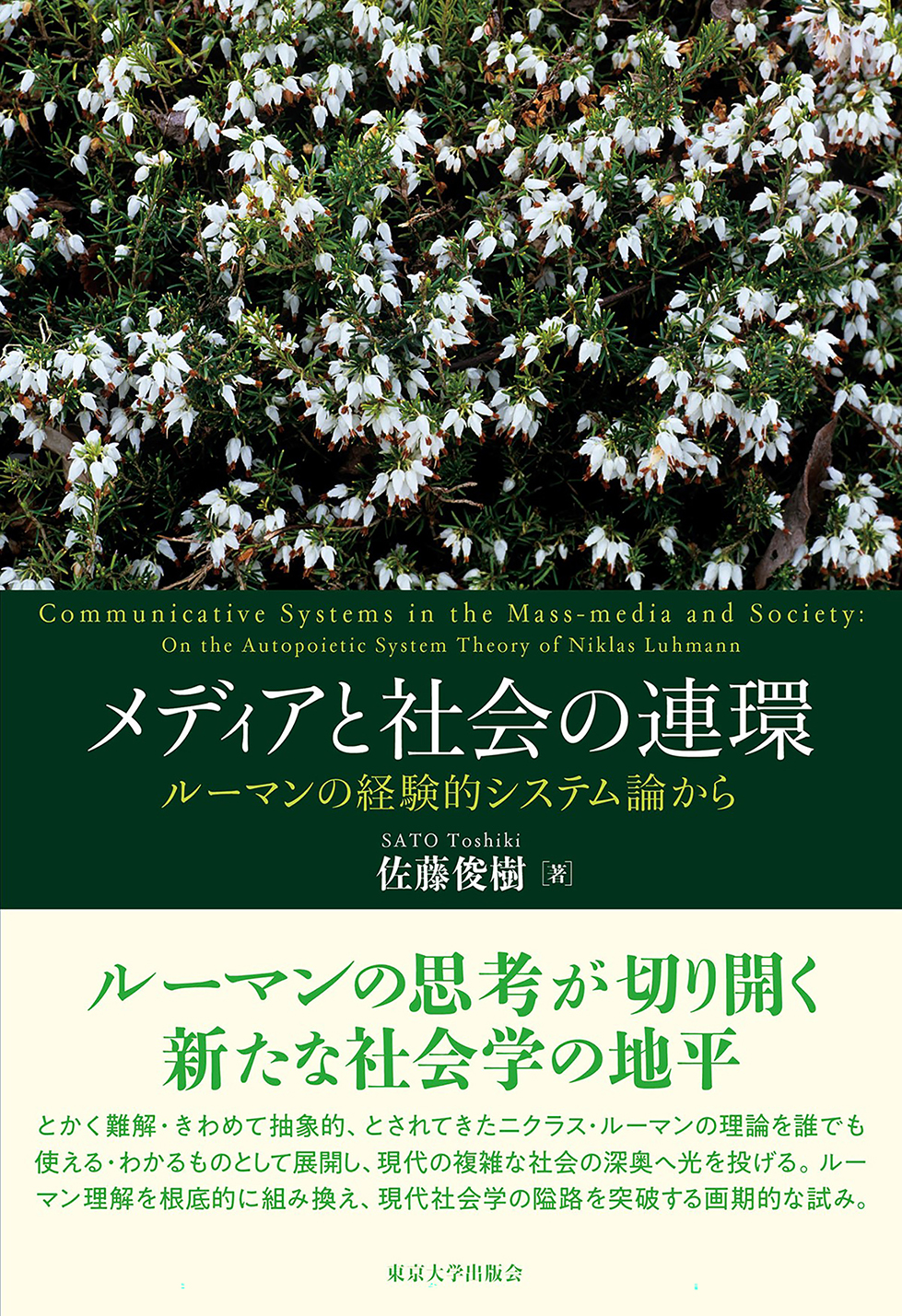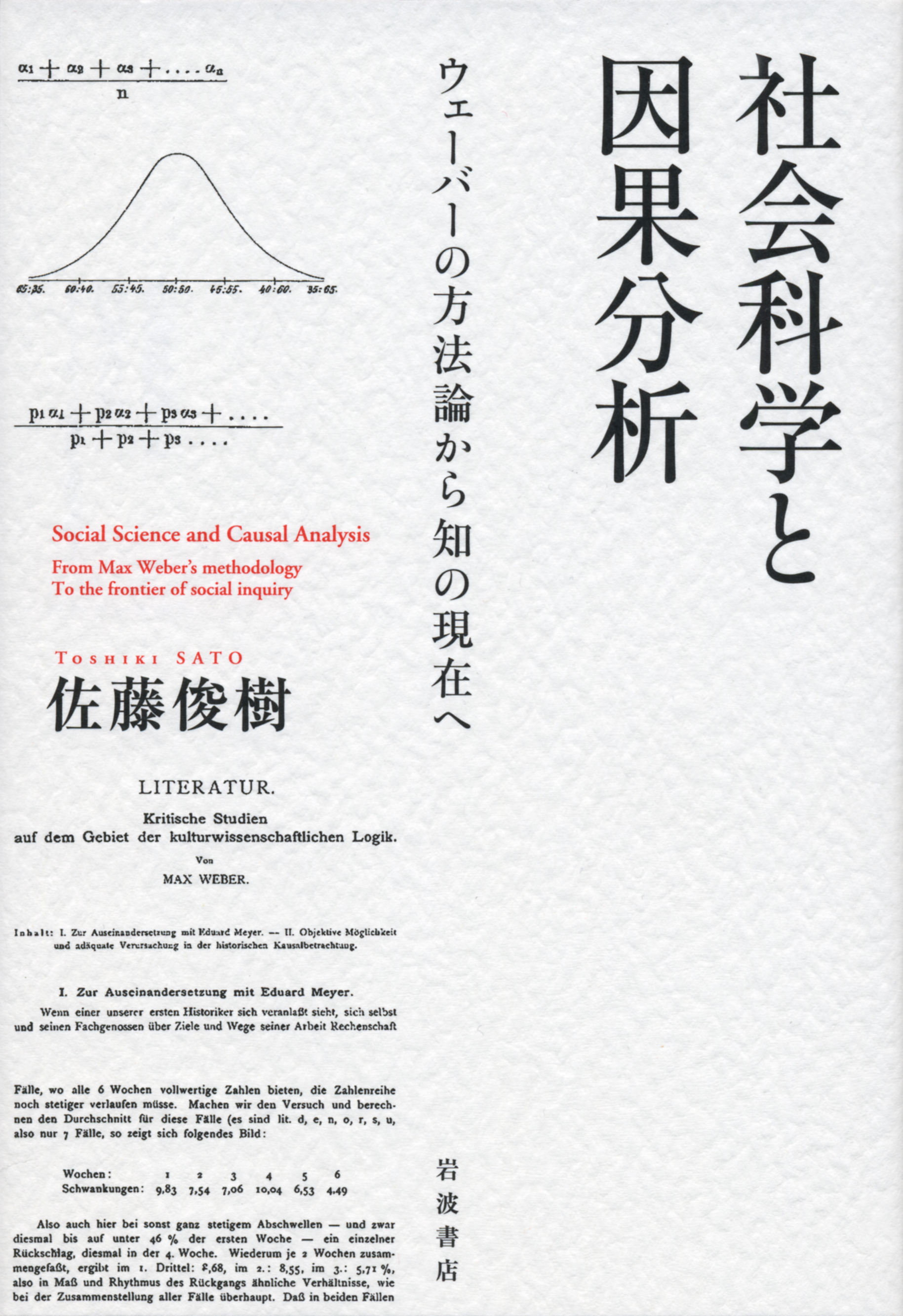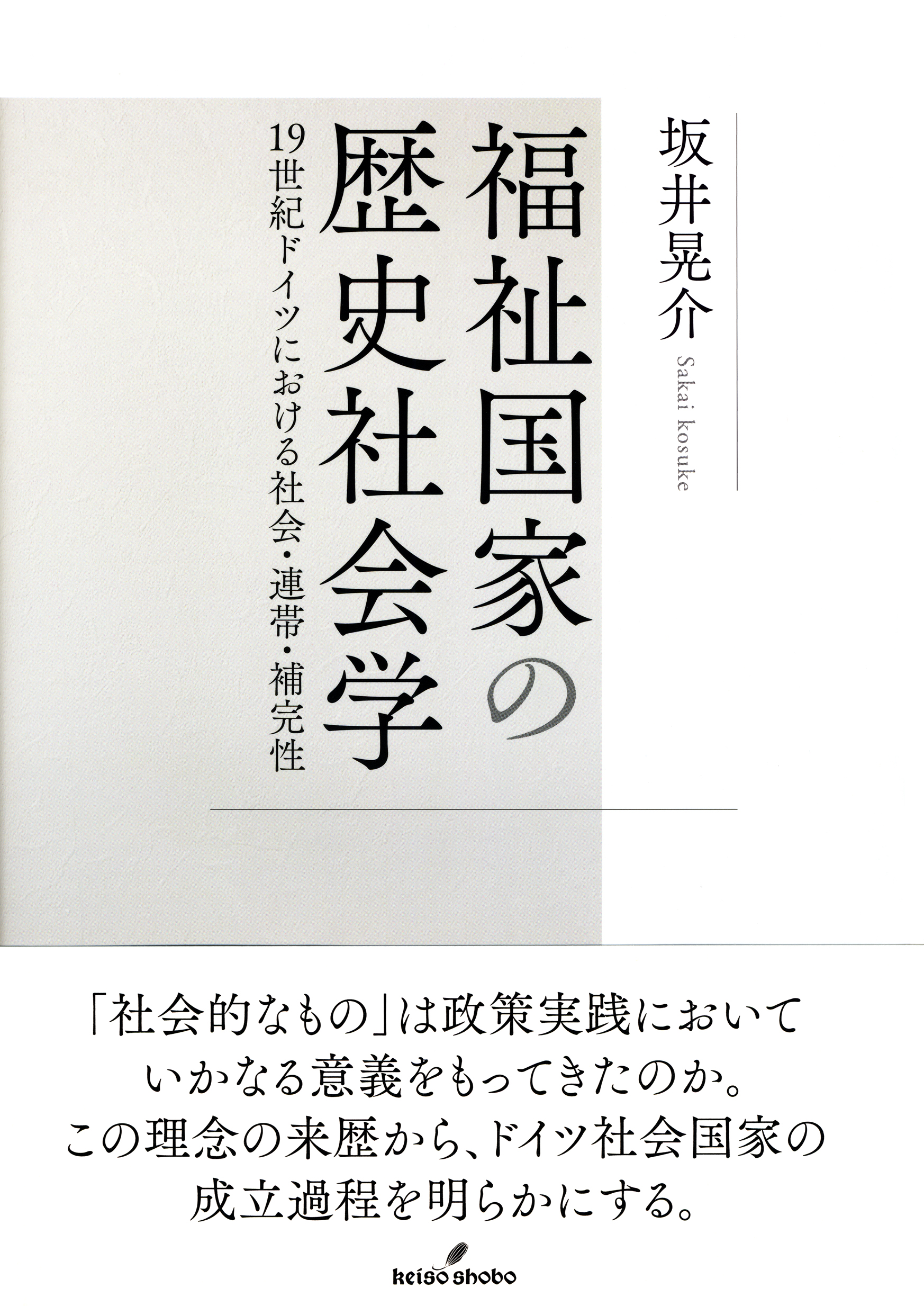
Title
Media to Shakai no Renkan (Communicative Systems in Mass Media and Society - On the Autopoietic Theory of Niklas Luhmann)
Size
450 pages, 127x188mm
Language
Japanese
Released
March 02, 2023
ISBN
978-4-13-050206-1
Published by
University of Tokyo Press
Book Info
See Book Availability at Library
Japanese Page
This book reconstructs sociologist Niklas Luhmann's communicative systems theory as a tool for empirical analysis.
Luhmann's communicative systems theory is a type of "autopoietic systems theory.” The autopoietic system theory was proposed by biologists H. Maturana and F. Varela and is used in a wide range of fields, from natural sciences, such as biology and cognitive science, to humanities. Maturana and Varela also aimed to apply the theory to society but were unable to construct an appropriate theory because they defined "human persons” as the system element. In contrast, Luhmann succeeded in constructing a coherent model by setting "communication" as the element; however, he was unable to appropriately limit the number of applicable subjects.
In this book, we succeeded Luhmann's theory by (1) setting the element as "communication" and (2) assuming that the communicative systems theory can be applied only to those objects for which it is possible to empirically observe the self-reproduction of the element. Although this makes it less of a general theory of society, the social sciences, especially sociology, have traditionally focused on situations wherein an event reproduces the same kind of event. This includes the reproduction of decisions in organizations, of positive law in law (circulation of positive laws), of research in science, and of news in mass media.
The events (units) reproduced in this way denote the self-production of elements, fulfilling the definition of the theory of autopoietic systems as a "recursive network.” Specifically, in units such as decision, law, research, and news, one unit causally directs the subsequent unit in time, while the succeeding unit reinterprets the preceding unit posteriorly. In this way, an event (unit) continues to reproduce the same kind of event (unit) as "communication.”
If we limit the scope of application to such a subject, communicative systems theory can be used as a theoretical model with empirical disprovability. Of course, this does not make it a general theory in the strict sense of the term, but such a subject is widely observed in the social sciences, as mentioned earlier, and is sufficiently versatile as a model.
In this book, (a) such a redefinition recasts communicative systems theory as a tool for empirical analysis. (b) Based on (a), we demonstrate that interesting situations in organizations, mass media, law, and politics can be explained more clearly and coherently than earlier. Furthermore, (c) from a sociological perspective, we clarify the extent to which natural science methods, such as complex systems and Bayesian updating, can be applied to social science research.
The social sciences have often extended and applied the methods of the natural sciences. One example is the unreflective use of market models in economics, employing physical science theories. Such unreflective application not only hinders dialogue and cooperation between the natural and social sciences but also creates a sense of mutual distrust. In this book, we show how natural science theories can be used appropriately in the social sciences by strictly redefining communicative systems within the scope of subjects that are specifically addressed by the social sciences. In this regard, we also provide a methodology for applying natural science models to the social sciences and humanities.
(Written by SATO Toshiki, Professor, Graduate School of Arts and Sciences / 2023)



 Find a book
Find a book


 eBook
eBook


